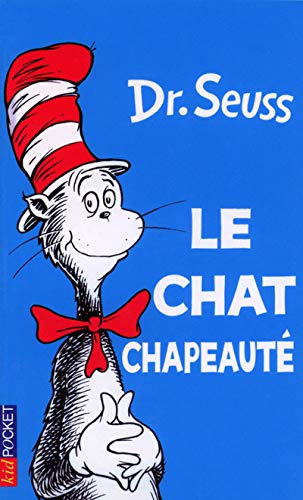
A 5-step Guide to Learn French with Your Baby
Did you know that you don’t have to be fluent to raise a bilingual child?
With these five tips on French for babies, raising a bilingual child isn’t just a pipe dream anymore.
And if you’ve been searching for an excuse to buckle down and learn French, this could be your perfect motivation.
Read on and see how you can learn French with your baby!
Contents
- 1. Use Your Most Common Phrases in French
- 2. Play French TV Shows or Movies
- 3. Read French Bedtime Stories
- 4. Hire a Francophone Babysitter
- 5. Make Learning French “Your Thing”
- Things to Remember When Learning French with Your Baby
- And one more thing...
Download: This blog post is available as a convenient and portable PDF that you can take anywhere. Click here to get a copy. (Download)
1. Use Your Most Common Phrases in French
Think about the words and phrases you naturally use every day or are teaching your child.
This could include everything from your kid’s favorite food, to clothing and household words, to words you’re already teaching them in English such as the numbers one through 10.
Now get in the habit of saying them in French alongside, or instead of, English. You can use a handy French-English dictionary app to look them up—many provide an audio pronunciation alongside the definition or translation.
This will make French highly relevant to your family’s life, while naturally integrating language learning into your day.
For example, you probably tell your child that you love them a lot, right? Instead of saying, “I love you,” coo, Je t’aime !
Let’s be honest, every parent says, “Don’t touch that!” at least five times per day. Instead, learn to say, Touche pas !
Study the names of animals, such as le mouton (sheep), le chat (cat), le chien (dog) and l’oiseau (bird). Learn terms for family members, such as la fille (daughter), le fils (son) or la tante (aunt).
You can even learn French words for baby talk. In English, when a child gets a cut or scrape, we might say they have an “owie.” The French call this un bobo .
2. Play French TV Shows or Movies
Watching cartoons and movies is a great way for kids to learn words in any language! The visuals hold their attention while the audio immerses them in the sounds of the language.
Better yet, it’s not just for the baby. Chanting a show’s French sing-along together or watching a French movie on family movie night are enjoyable ways for everyone to learn basic vocabulary.
Just be careful not to let the costs of screen time outweigh the benefits of French immersion. The American Academy of Pediatrics (AAP) recommends that children ages two through five limit screen time to under an hour per day, and that babies under age two avoid screens as much as possible. So try to schedule your French viewing accordingly as your kids grow.
It’s super easy to start. Just turn your regular screen time into French time! Instead of sitting down to watch “Sesame Street” or “Doc McStuffins,” you could check out “Bonjour Les Amis” (“Hello Friends”) on Amazon Prime Video. This is a 52-minute-long children’s movie specifically designed to teach French to youngsters. It’s slow and repetitive, which makes it perfect for your toddler!
You can also find an array of bite-sized clips from animated movies and cartoons with interactive subtitles on the FluentU program.
FluentU takes authentic videos—like music videos, movie trailers, news and inspiring talks—and turns them into personalized language learning lessons.
You can try FluentU for free for 2 weeks. Check out the website or download the iOS app or Android app.
P.S. Click here to take advantage of our current sale! (Expires at the end of this month.)
3. Read French Bedtime Stories
I’m a huge advocate of parents reading bedtime stories to their babies every night, regardless of your language goals! My mom did this with me until I was in late elementary school, and I gained a ton of educational benefits from this ritual.
Children need to hear words several times before they learn how to say them. Reading the same books over and over again helps kids develop speech skills.
Reading to them before bed is also a bonding experience. Through French bedtime stories, your child will associate reading and French with special time with mommy or daddy!
So now’s the moment to develop that habit with French storybooks. There are countless children’s books available in French. You may choose to start with stories that were originally written in French by francophone authors. There are French classics, such as “Le Petit Prince” (“The Little Prince”) by Antoine de Saint-Exupéry or one of the “T’choupi” books by Thierry Courtin.
You can also read classic American stories that’ve been translated into French. Several famous Dr. Seuss books exist in French, such as “Le Chat chapeauté” (“The Cat in the Hat”) and “Les Œufs verts au jambon” (“Green Eggs and Ham”).
Check out Scholastic Canada for even more ideas. For example, you’ll find numerous books from the “Clifford the Big Red Dog” series translated into French.
Now, read one of these books to your baby. Every. Night.
These simple books will be beneficial to you, too. You’ll learn basic French vocabulary and improve your reading skills. Reading out loud is an ideal way for you to work on your pronunciation daily!
For more French children’s books, check out this post!
4. Hire a Francophone Babysitter
You probably already need a babysitter from time to time. In this case, consider finding a babysitter who speaks French.
Make an agreement with the caregiver that they’ll speak only French with your child. This way, your child can hear the language for a couple of extra hours per week. They’ll also learn vocabulary from the sitter that you might not necessarily know to expose them to.
Once your little one picks up on the babysitter’s vocabulary and learns to talk, your child could actually be the one teaching you French! Learning from your kid can be a fun way to expand your language horizons.
5. Make Learning French “Your Thing”
Teaching your baby French isn’t supposed to be tedious or exhaustive. Establish designated time to speak French with your child, and make it fun! Read those storybooks, watch TV and sing songs.
This way, your child will associate learning the language with quality time with a parent. It’s a great way to bond. It’ll also help build a routine for your French learning, which is important to keep both you and your kid progressing towards fluency.
If you want to learn French with your baby and you have a partner who isn’t very interested, you may choose to have one of you speak English and the other speak French with the baby. This is a good way to establish bilingualism and create quality time between the child and each of you separately.
Things to Remember When Learning French with Your Baby
- You don’t have to be fluent to raise a bilingual child. This may seem confusing. How are you supposed to teach a baby to speak French if you don’t even speak it yourself?
Remember, if your child is young, even their English skills are extremely basic! But they’re still learning. You don’t have to be able to debate politics to teach a little one French. The key is simply to build a linguistic foundation.
- Don’t wait. Research shows that young kids have a natural enthusiasm and aptitude for learning languages. So don’t procrastinate! It’s never too late to start teaching your child, but many will tell you that the younger they are, the easier the endeavor.
Not only will an early start be beneficial to kids, but it’ll also make teaching and learning French easier for you if you don’t want to play catch-up.
- Be patient. Just because children often have an easier time picking up new languages, don’t expect them to become fluent immediately! They’ll pick up the language over time through repetition and immersion, just like adults!
This rule applies to you, too. Give yourself the space and time to learn and don’t be too hard on yourself when you make mistakes.
If you dream of a household of francophone children, don’t write off this thought as just a fantasy. By integrating French into your home and your relationship with your baby, you’ll both be living la vie française (the French life) in no time!
Download: This blog post is available as a convenient and portable PDF that you can take anywhere. Click here to get a copy. (Download)
And one more thing...
If you like learning French on your own time and from the comfort of your smart device, then I'd be remiss to not tell you about FluentU.
FluentU has a wide variety of great content, like interviews, documentary excerpts and web series, as you can see here:

FluentU brings native French videos with reach. With interactive captions, you can tap on any word to see an image, definition and useful examples.

For example, if you tap on the word "crois," you'll see this:

Practice and reinforce all the vocabulary you've learned in a given video with learn mode. Swipe left or right to see more examples for the word you’re learning, and play the mini-games found in our dynamic flashcards, like "fill in the blank."

All throughout, FluentU tracks the vocabulary that you’re learning and uses this information to give you a totally personalized experience. It gives you extra practice with difficult words—and reminds you when it’s time to review what you’ve learned.
Start using the FluentU website on your computer or tablet or, better yet, download the FluentU app from the iTunes or Google Play store. Click here to take advantage of our current sale! (Expires at the end of this month.)





